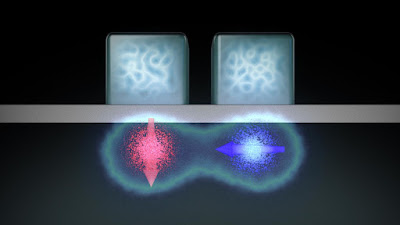Topics: Computer Science, Quantum Computer, Quantum Mechanics
A new two-qubit quantum processor that is fully programmable and single electron spins that can be coherently coupled to individual microwave-frequency photons are two of the latest advances in the world of solid-state spin-based quantum computing. The breakthroughs could help in the development of large-scale spin-based processors in the future.
While classical computers store and process information as "bits" that can have one of two logic states – "0" or "1" – a quantum computer exploits the ability of quantum particles or bits (qubits) to be in a "superposition" of two or more states at the same time. Such a device could, in principle, outperform a classical computer on certain tasks, such as factoring large prime numbers and sorting large random lists, thanks to it being massively parallel.
In recent years, researchers have succeeded in making qubits from a number of solid-state materials, including semiconducting quantum dots and superconductors. Semiconductor spin qubits appear to be better for a number of reasons. For one, they last for a relatively long time before decohering (interacting with their environment). They can also be controlled electrically and can be integrated with high density on a chip.
The problem, however, is that it is still difficult to control the state of individual spin qubits and intertwine multiple qubits in a controlled way.
Silicon qubits show promise for quantum computers, Belle Dumé, Nanotechweb.org

Comments